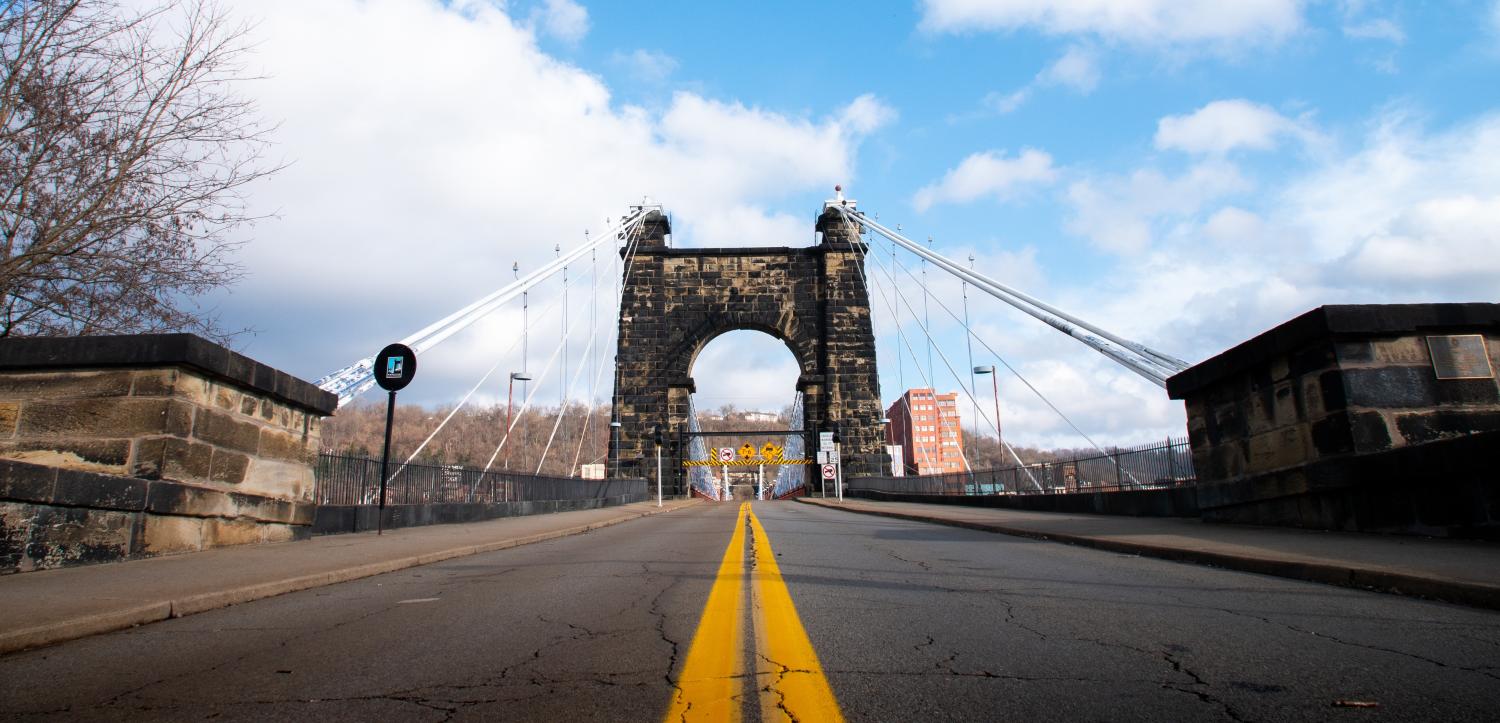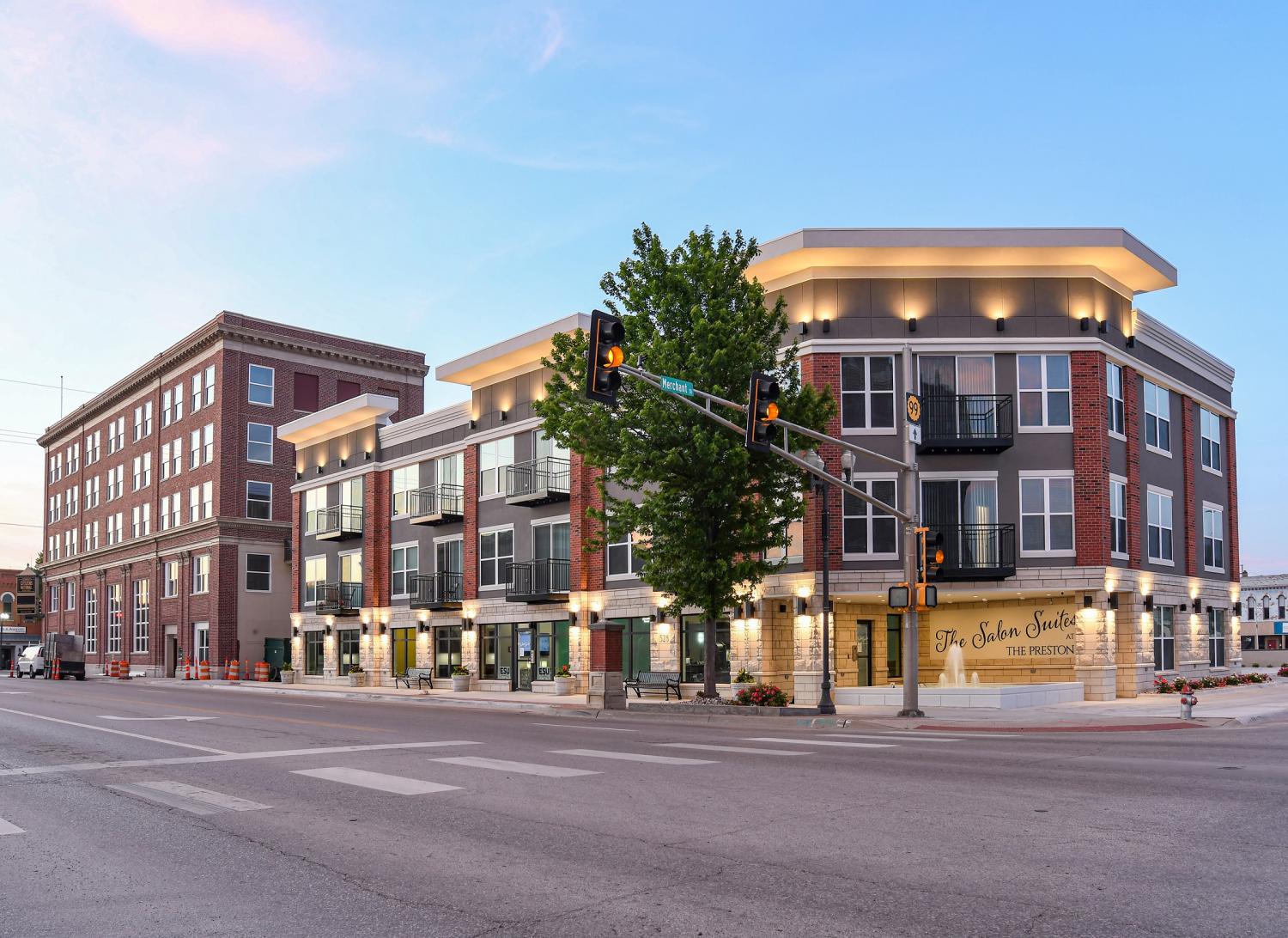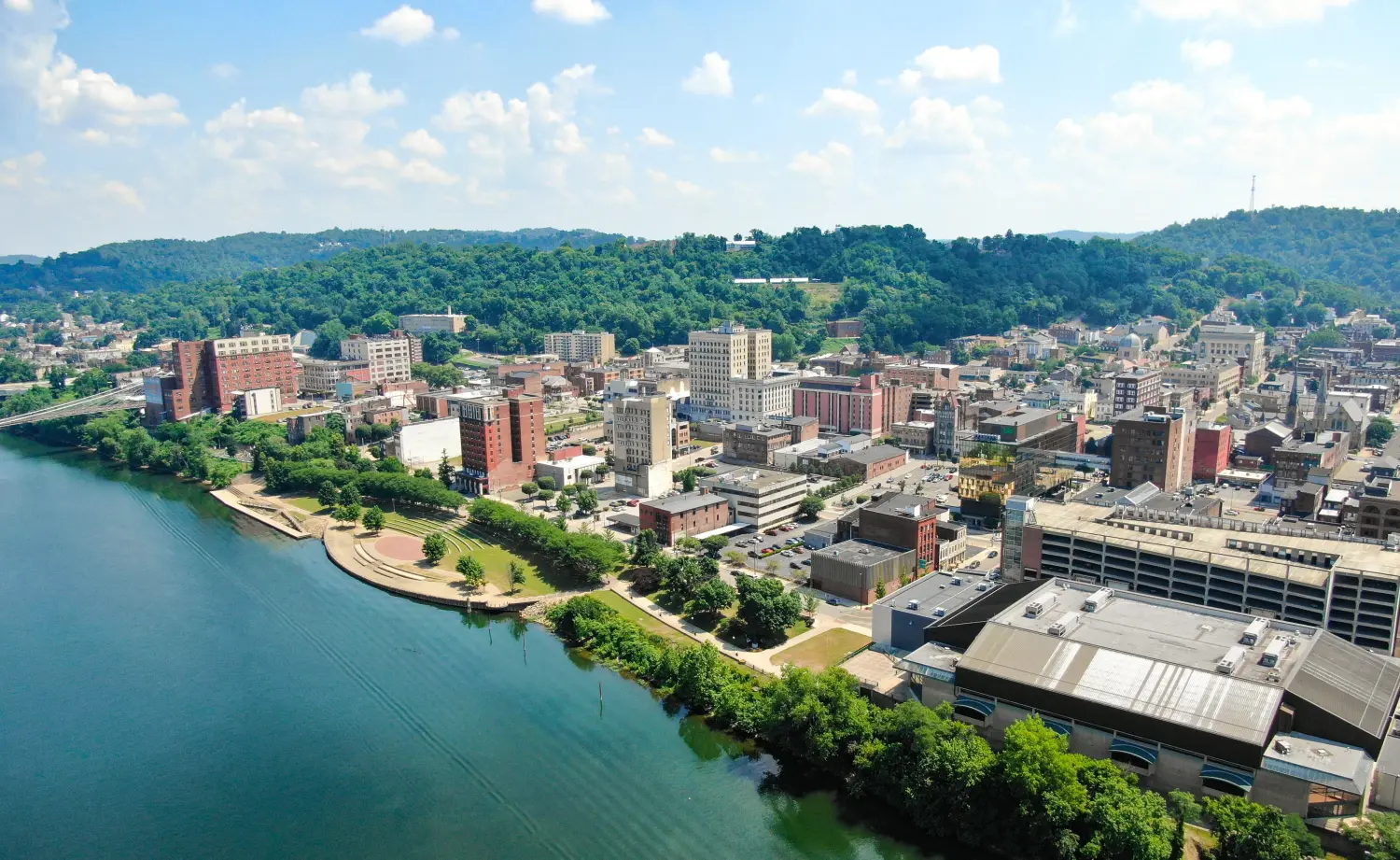This brief is part of a five-part series examining how downtown commercial corridor revitalization can support rural recovery and resilience, and the policy and capacity-building supports needed to enhance and scale these strategies amid the COVID-19 crisis and beyond.
Contents
- I. Introduction
- II. Why a flexible, accessible, healthy built environment matters for rural resilience
- III. Findings: Can downtown revitalization support built environment and quality-of-life improvements that benefit underserved rural residents and small businesses amid this economic crisis and beyond?
- IV. Conclusion
I. Introduction
As the nation’s worst COVID-19 outbreaks concentrated in remote rural towns this fall, the geographic isolation once thought to shield them from the pandemic swiftly transitioned into a severe disadvantage. Rural communities and the small businesses and residents within them faced overlapping, systemic challenges entering this crisis. Rural residents—particularly Black, Native American, and Latino or Hispanic residents—lack adequate access to health care and broadband connectivity, often have to travel long distances to obtain fresh food, and are disproportionately likely to struggle with poverty, debt, and isolation. Rural small businesses face similar challenges in broadband access and access to capital, and are suffering further due to their concentration in the most immediately vulnerable industries. As we and others have argued since the outset of the crisis, rural residents and small businesses will undoubtedly require concentrated fiscal relief to survive.
Yet, within rural communities, there are distinct place-based advantages that may help small businesses and residents mitigate some of these barriers. Our previous research indicates that businesses in denser rural commercial corridors and Main Streets are leveraging their physical locations to more durably withstand economic hardship. These businesses can coordinate with other businesses, seek support from place-based business associations, attract on-foot customers to make up for lost revenue, and adapt their business models in creative ways by virtue of their proximity to other businesses and amenities.
In many cases, these place-based advantages are the result of pre-pandemic efforts to revitalize rural downtowns into walkable, mixed-use hubs that support a concentration of small businesses, increase housing stock, and leverage existing assets for community revitalization. Often in partnership with Main Street programs and other place governance organizations, these downtown revitalization efforts are street-level solutions rooted in local context that support small businesses and residents by leveraging proximity and increasing the dense clustering of public and private amenities downtown. As federal relief lags behind small business and resident needs, it is imperative to understand these homegrown strategies working to build resilience, as they will play an outsized role in recovery.
This brief examines how rural downtown revitalization strategies can support built environment and quality-of-life improvements that benefit underserved residents and small businesses amid this economic crisis and beyond. As part of a five-part series, it draws from on-the-ground research in three rural communities at the outset of the COVID-19 outbreak in the United States to highlight key lessons learned for other rural communities and point to the policy and capacity-building supports needed to sustain, improve, and scale downtown revitalization strategies.
|
Methods: Examining how downtown revitalization can foster built environment improvements in rural America
The Brookings Bass Center for Transformative Placemaking and the National Main Street Center conducted on-the-ground research in Emporia, Kan., Wheeling, W.Va., and Laramie, Wyo. It consisted of in-depth interviews with 62 residents, business owners, and other key stakeholders, as well as four supplemental focus groups with residents and entrepreneurs between February and March 2020. For a full description of our mixed-methods and approach, see “Why Main Streets are a key driver of equitable economic recovery in rural America.”
Overall, we examined the effectiveness of downtown revitalization strategies on four key outcomes of community well-being, including economic, built environment, social, and civic outcomes. This brief focuses on built environment outcomes. Using the Bass Center’s transformative placemaking framework, we examined the extent to which rural downtown revitalization efforts can foster built environments that are:
1. Accessible: Providing easy, reliable, and affordable multimodal movement to, from, and within the area 2. Flexible: Offering physical spaces and infrastructure that support a mix of uses while remaining adaptable to growth and change 3. Healthy and sustainable: Encouraging development and design that advance the health, safety, and resiliency of people and the environment |
II. Why a flexible, accessible, healthy built environment matters for rural resilience
Despite mainstream portrayals that often define rural areas by their deficits, rural communities possess a diverse array of local assets that can be leveraged to support revitalization. In the case of many rural towns, this includes their historic building stock—typically concentrated in denser downtowns—that can be repurposed for mixed-use development that supports a diversity of small businesses and housing options for residents. Yet in many places, these assets remain vacant and underutilized, as communities struggle with absentee landlords, poor building conditions, vacant properties, a lack of residents downtown, and a host of regulatory barriers.
To mitigate these challenges, downtown revitalization efforts—typically led by a Main Street organization or other place governance entity—strive to implement programs that restore and activate older buildings, coordinate city officials and developers to increase the downtown housing stock, and engage in efforts to foster walkability and streetscape improvements. Despite the widespread adoption of these strategies, however, research on their effectiveness and reach is limited—with most studies detailing the number of buildings rehabilitated or the public and private spending invested downtown, but revealing little about the holistic impacts of these improvements, who benefits from them, and how these benefits can be more widely shared.
The stakes for understanding these dynamics are high—and not just for rural small businesses. Residents in rural America face significant quality-of-life challenges, including declining populations, job losses, poor internet connectivity, limited food access, and poorly funded community services. These challenges are not equally distributed, with Black and Native American residents in rural communities facing heightened barriers in overall quality of life, internet access, and the ability to pay off unexpected expenses. To improve quality of life and retain residents, rural areas must not only enhance residents’ access to economic opportunity, but also invest in quality housing, broadband connectivity, and amenities like grocery stores that can benefit underserved residents. Downtown revitalization is one strategy for getting there, but we need to know if it can be leveraged to not only support small businesses, but also to close quality-of-life gaps and contribute to a more equitable future for rural America.

|
A snapshot of the built environment in Wheeling, Emporia, and Laramie
Nationally, rural residents and small businesses grapple with multifaceted consequences of geographic isolation, including diminished broadband access, limited access to grocery stores, distance from major population centers, and a host of other barriers. Our three study communities each grapple with these challenges in their own ways, revealing some of the hardships that downtown revitalization might be positioned to address. (For a more complete description of the three study communities, see “Why Main Streets are a key driver of equitable economic recovery in rural America.”)
Wheeling, W.Va.: Wheeling’s location along the Ohio River and about an hour away from Pittsburgh once made it a prime location for manufacturing and retail. Following the decline of those industries, however, Wheeling’s population decreased from 48,000 to 27,000 residents between 1970 and 2018—leaving over 30% of downtown buildings vacant in 2015, absent a sizeable population to fill them. The city struggles with aging infrastructure, including challenges with a historic suspension bridge connecting downtown to Wheeling Island—creating persistent transportation issues for residents in the more disinvested areas. Today, Wheeling residents face worse broadband connectivity than rural residents overall, with 28% of households lacking internet access. They also face significant gaps in food access, have high disparities in poverty rates by race, and are rent-burdened.
Emporia, Kan.: Emporia is located in Central Kansas, about halfway between Wichita and Kansas City, and sits along a major north-south interstate from Texas to Minnesota. Unlike many rural communities, its population has only declined slightly in recent years, down from about 25,000 residents in 1980 to about 24,000 residents in 2018. Downtown vacancies have decreased substantially, going from a 41% vacancy rate in 1991 to 8% today. Emporia is home to a sizeable Latino or Hispanic population (27%) who face significant racial disparities in poverty rates, renting costs, and barriers in food access. Its downtown is located at the intersection of several major highways, including State Highway 99 and Federal Highway 50, making walkability strategies difficult but imperative.
Laramie, Wyo.: Laramie’s location is more isolated from major population centers than the other study communities, and its economy is centered around the University of Wyoming—meaning its population, real estate, and built environment trends vary from many other small towns. Notably, Laramie has seen modest population growth in recent years, has better access to the internet than the average community in the U.S, and has had a stable vacancy rate of about 5% over the last decade. Despite these advantages, Laramie residents are significantly housing-cost-burdened (53.1% of renters pay more than 30% of their income in rent), lack adequate access to healthy foods, and experience striking disparities in poverty rates by race.
|
III. Findings: Can downtown revitalization support built environment and quality-of-life improvements that benefit underserved rural residents and small businesses amid this economic crisis and beyond?
To understand the how downtown revitalization contributes to built environment and quality-of-life improvements in rural areas, we interviewed 62 small business owners and other key stakeholders and conducted more open-ended focus groups with small businesses and residents. Our research revealed two primary findings, which together suggest that downtown revitalization is an effective strategy for fostering small business and housing density downtown and for closing gaps in food access. However, further investment in and attention to quality housing and multimodal transportation are needed to ensure all residents benefit.
Finding #1: Downtown revitalization promotes mixed-use development for retail and housing units— supporting the density and walkability that can help rural communities build resilience. However, affordability remains a concern.
True to their aim, downtown revitalization efforts were successful in leveraging historic assets to foster small business and housing density downtown. This facilitates the conditions of proximity and walkability needed for small businesses to coordinate with one another amid the pandemic and have a residential base of customers nearby. However, a mismatch between residential prices downtown and incomes raises affordability concerns.
- In coordination with public and private officials, downtown place governance organizations leverage historic building stock to increase small business density—creating conditions to support small business resilience: The historic building stock downtown was both a challenge and asset for small business owners. Main Street organizations in all three communities helped them navigate challenges related to structural conditions, outdated systems, inhospitable floor plate dimensions, and a host of other built environment concerns. They coordinated across sectors to advocate for infrastructure improvements, created historic districts and tax credit programs, advocated for incentive programs to improve commercial facades, acted as a matchmaker for commercial tenants to share vacant spaces together, and offered low-cost incubator spaces with free internet access.
In Emporia, Main Street organizations convened public officials as a “code team” to walk through vacant properties and assess compliance with entrepreneurs interested in leveraging the space. As one Emporia stakeholder said of the code team, “Anytime a new business has just moved into a new space, whether it’s rental or purchase, Main Street will collaborate to bring together all of the important offices with the city—our fire marshal, our code services officer, our building inspector, as well as a local architect or engineer that can do a walkthrough of the building and they all do it together. So they could have a conversation with the entrepreneur or the developer: ‘What are you wanting to do? What do current rules and regulations allow? What things or hurdles may you run into that we wanna talk about?’ And we can go from there.”
Together, these efforts helped foster small business density downtown (see Figure 5) and create the conditions for small businesses to collaborate with one another and leverage place-based advantages amid the COVID-19 crisis. As one stakeholder in Wheeling said, “Organically, there are a lot of businesses supporting each other as well…there’s an area called Market Plaza where those businesses are all very in the know with what’s going on with each other, and how they can collaborate…So it’s almost like there’s identities that are being created amongst different pockets or blocks of downtown.” Pre-pandemic efforts to foster small business density had other unforeseen benefits too; in Laramie, for instance, the Main Street organization had cultivated relationships with developers and absentee property owners to advocate for business owner interests, and were able to leverage these relationships to negotiate rent concerns amid COVID-19.

- Downtown revitalization can increase demand for—and the availability of—downtown housing. However, more residents need access to quality housing: Housing availability in the three rural communities’ downtowns is scarce and in high demand. All three Main Street programs made adding market rate housing units a key component of their downtown revitalization strategy. In Wheeling, Main Street partner organizations worked with the city and developers to convert a historic warehouse into 70 market rate apartments, which have since reached full occupancy and have a waiting list. Emporia’s Main Street organization championed the creation of 200 new upper-floor units in the downtown area, utilizing the often-vacant space above commercial storefronts for community benefit. An Emporia Main Street official told us, “When we prescribed mixed-use development with upper-floor housing, people thought I was nuts. [They said] no one was going to want to live like that. We found a younger developer willing to take a shot on analysis, and he produced a mixed-use development called Granada Plaza & Lofts…We fed him projects, and more people were interested in upper-floor redevelopment from a housing perspective. The city stepped up and we were able to work with him on industrial revenue bonds for upper-story. When everyone got on board, they saw these [housing units] filled up.” Establishing a housing market in a rural downtown is also an important step in boosting pedestrian activity and supporting small businesses.

While these strategies were successful in increasing the supply of market rate housing downtown (see Figure 6), they also created a concerning mismatch between the cost of housing and many residents’ income levels in Emporia, Laramie, and Wheeling—leading to a divide between higher-end downtown apartments and older, more modest buildings nearby. As a Laramie resident told us, “There’s a big disparity between some people that live downtown and what they make and everybody else. Because I know there’s a doctor that lives downtown that does very well, wife’s a lawyer, and then there’s other people renting spaces downtown…not exactly living in squalor, but squalid conditions is the way I’d put that. But they’re being charged a premium rate to live downtown, and so there’s not a lot of incentive for the owner of the property to keep it up or make it nice.” (For more details on economic divides between residents, see “Rural Main Streets can’t achieve true economic revival without bridging social divides.”) Thus, while downtown revitalization efforts were successful in increasing residential units downtown (providing a durable customer base for downtown businesses amid the pandemic and quality housing for those who could afford it), investments in accessible, quality housing for a broader swath of residents are also needed to meet demand.

- Downtown revitalization enhances walkability in rural areas, but investments in multimodal transportation options would ensure that more residents can benefit: By cultivating a dense concentration of housing and small businesses downtown, revitalization efforts have helped create the conditions for improved walkability, health, and sustainability in rural communities. Public officials, residents, and business owners in all three communities touted the number of local retailers and restaurants that were easily accessible on foot. “Now, I can walk to about a dozen restaurants within five or six blocks that, in 2013, all but two or three of them weren’t here,” a Wheeling resident told us. Programs such as façade improvement grants or public art installations (both of which were initiated in the three study sites) also made the downtowns more attractive to pedestrians. “Laramie is doing what other big downtowns—Chicago, you name it—are doing,” said a business owner there. “Residents downtown can eat, you can shop now with [the new grocery co-op], you can walk anywhere. I parked my vehicle for a good two years.”
However, this walkable, amenity-rich lifestyle remains out of reach for some, as we highlight in-depth in “Rural Main Streets can’t achieve true economic revival without bridging social divides.” Partially contributing to this are inequities in the level of transit service offered, as one Wheeling nonprofit stakeholder detailed: “If I work in downtown and I make a significant amount of money, I can live here and I can have a good life. Because everything is in walking distance and things like that. I, of course, look at it from the people who live [in affordable/supportive housing]. And if [they] can’t get there via bus, they’re not going.” Wheeling’s Main Street program attempted to mitigate some of these barriers by partnering with city and nonprofit stakeholders to anchor a new downtown business right next to a main bus station, but incompatible hours and poor connectivity still prevented many from accessing it.
Finding #2: Downtown revitalization can help increase access to healthy food—a critical first step in mitigating quality-of-life gaps.
All three communities faced severe gaps in healthy food access prior to downtown revitalization (See Figure 2). Wheeling’s downtown was formally a federally designated food desert. The Main Street organization there coordinated with the nonprofit Grow Ohio Valley and the city to locate a nonprofit food co-op in a central location downtown. It launched in October 2019 with the mission to support local farmers and food makers, as well as provide residents with access to fresh, healthy foods. “We have things that are really important to us: to pay farmers a living wage and provide a viable sales outlet for them, and two, to provide access to these higher quality, more specialty foods,” said a co-op employee. “But we also have and have talked about a food access mission and being in a low-income, food-insecure neighborhood. And so, we balance that all the time.” To help ensure more low-income residents could access fresh food from the co-op, they offer matching programs for federal food benefits. However, market stakeholders discussed the need for more intentional outreach to low-income residents to mitigate perceived barriers in affordability and access.
In Laramie, the city collaborated with Main Street to locate a food co-op downtown. After securing a grant from the Wyoming Business Council, the city and Main Street worked together to fill a vacant downtown space, and ultimately donated the space to Laramie Main Street to house the Big Hollow Food Co-op. According to a Laramie public official, they made the donation to establish a new revenue stream, hand off property management responsibilities, and give space for a new business to attract more activity and distinction to the historic downtown. “Every time I go to Fort Collins, to Whole Foods, I see Laramie people there. We wanted to kind of build our own opportunity here in town,” the official said.
In Emporia, year-round farmers markets formed the backbone of a strategy to both increase food access and support nearby farmers, makers, and residents. Across all three communities, these pre-pandemic efforts to increase food access and direct-to-consumer models have been instrumental during COVID-19, when food insecurities are heightened and local markets are playing an outsized role in feeding food-insecure residents. While there is still much to be done in closing quality of life gaps, reducing the amount of time residents have to travel to obtain fresh food is one critical step for getting there.
IV. Conclusion
The relative geographic isolation of rural communities places them at a disadvantage in the national recovery trajectory. But the physical proximity within rural communities—the ability to walk from place to place, the proximity of business owners to each other, and the mix of housing, businesses, and amenities within a place—can help them endure the pandemic’s economic effects and build resilience in the long term.
Moreover, through this research series, we demonstrate how local leaders are not only encouraging the proximity and connectivity between businesses and residents, but are implementing holistic strategies to build rural resilience in the months and years to come. These leaders are playing an outsized role in small business survival, strengthening social ties between neighbors, and nurturing new civic structures to advance community priorities. As we look toward promoting a more even economic recovery, it is imperative to invest in, adapt, and scale the efforts that nurture these benefits and bolster rural community leaders as they embrace new ways of thinking that support inclusive, vibrant, and connected places in the long term.
The authors thank Joanne Kim and Evan Farrar for their research assistance.









